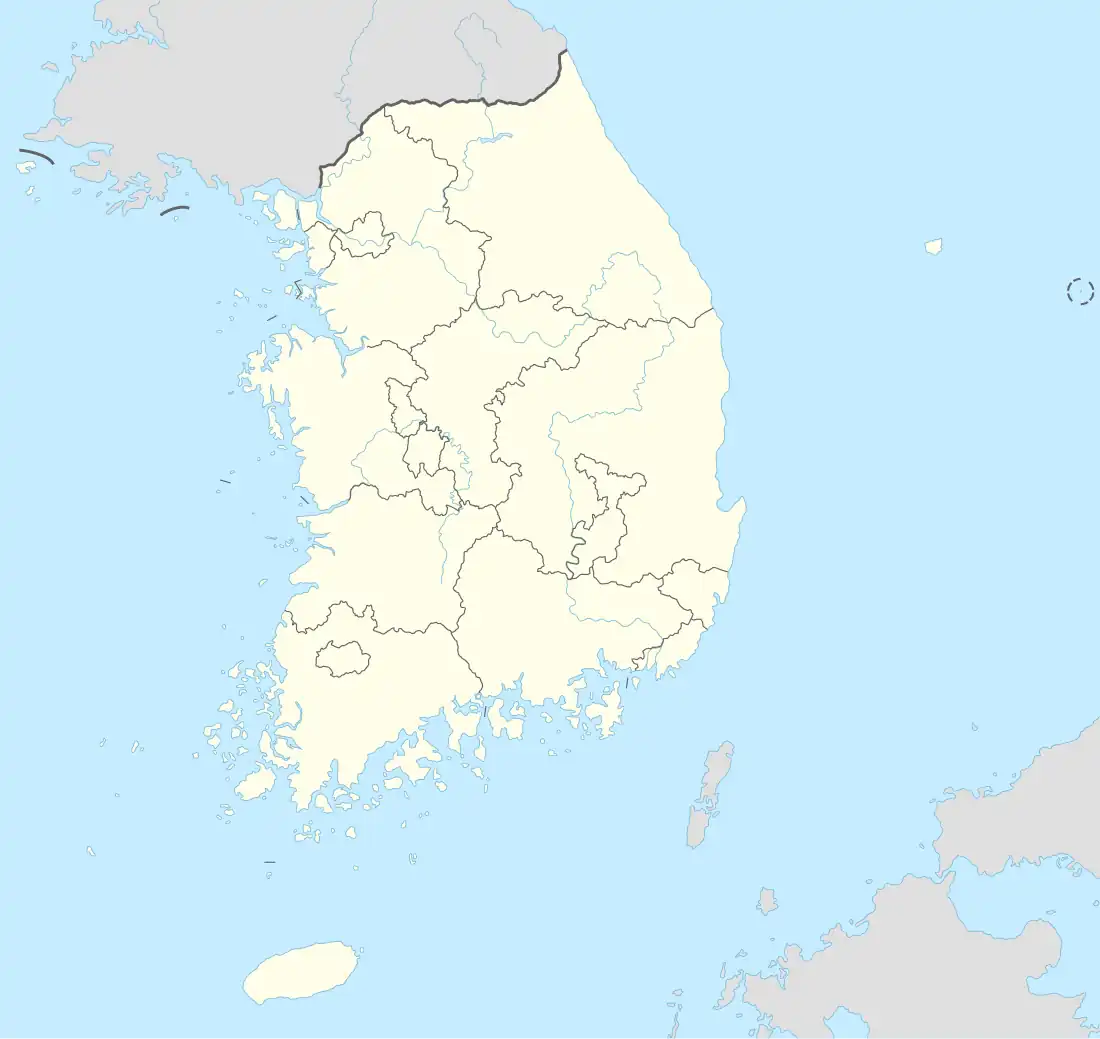Chuksan-ri
Chuksan-ri
축산리 | |
|---|---|
 Chuksan-ri Location in South Korea | |
| Coordinates: 36°30′16″N 129°26′13″E / 36.50456°N 129.43695°E | |
| Country | South Korea |
| Province | North Gyeongsang |
| County | Yeongdeok County |
| Township | Chuksan-myeon |
| Time zone | UTC+9 (Korea Standard Time) |
| Postal code | 766-834 |
Chuksan-ri (Korean: 축산리) is a small coastal village located within rural Chuksan-myeon, a township in Yeongdeok County, North Gyeongsang Province, South Korea. Positioned along the eastern seaboard of the Korean Peninsula, Chuksan-ri faces the Sea of Japan—also known locally as the East Sea.
History
Intertwined with the broader historical developments of the region, the area has been inhabited since ancient times. During the Goryeo period (918–1392), the region encompassing present-day Yeongdeok County, including Chuksan-ri, was part of strategic coastal defenses. Historical records indicate that Yeongdeok was among the locations connected by the Cheolli Jangseong, a series of fortifications constructed between 1033 and 1044 to protect against northern invasions. These fortifications underscore the area's importance in national defense during that period.[1]
USS Magpie Incident and Recovery of Robert W. Langwell
On October 1, 1950, during the Korean War, the U.S. Navy minesweeper USS Magpie (AMS-25) sank off the coast near Chuksan-ri after striking a naval mine. The incident occurred approximately two miles offshore. Twelve crew members were rescued by the nearby USS Merganser, while twenty-one, including the commanding officer, Lt. Warren R. Person, were lost at sea.[2]
In 2008, officials from South Korea's Ministry of National Defense Agency for Killed in Action Recovery and Identification (MAKRI) interviewed an elderly fisherman in Chuksan-ri. He reported that he and other villagers had recovered the body of an American sailor shortly after the sinking and had buried him near the village. On April 28, 2009, MAKRI personnel located the burial site and excavated human remains along with military artifacts. The remains were identified as those of Ensign Robert W. Langwell, one of the sailors lost in the USS Magpie sinking. His remains were repatriated to the United States and interred at Arlington National Cemetery on July 12, 2010.[3][4]
Geography
Chuksan-ri is notable for its natural beauty and position within one of South Korea's lesser-known coastal zones. The area features forested hills, small rivers and streams that flow into the sea, and agricultural fields on relatively flat land near the shoreline. As part of Yeongdeok County, Chuksan-ri lies in a region historically associated with fishing and coastal trade, though it remains a quiet and sparsely populated settlement.[5][6]
The village is situated between two neighboring communities: Sajin-ri to the south and Gyeongjeong-ri to the north.
Transportation
Transportation to and from Chuksan-ri is facilitated by a network of regional roads that link the village with other parts of Yeongdeok County and neighboring Uljin County to the north. Though remote, the village is accessible by car and exemplifies traditional Korean rural life.[7]
Economy
The workforce largely consists of individuals engaged in traditional family-run fishing and farming operations. However, the village faces demographic challenges, including an aging population and youth migration to cities. Efforts to stimulate the local economy through tourism and the promotion of regional specialties are ongoing.[8]
Climate
Chuksan-ri experiences a humid continental climate with strong oceanic influences. Winters are cold and relatively dry, while summers are warm, humid, and marked by heavy rainfall during the East Asian monsoon (June to August). The proximity to the Sea of Japan results in frequent coastal winds, occasional fog, and variable weather throughout the year. Typhoons may impact the area during late summer and early autumn.[9]
Tourism and landmarks
Chuksan-ri is part of the Yeongdeok Blue Road, a scenic coastal walking trail popular with domestic tourists. The route features picturesque ocean views and access to natural landmarks. The village is home to the Jukdosan Observatory, a lighthouse offering elevated views of the coastline and open to visitors.[10]
See also
References
- ^ "Story of Villages on BlueRoad: Chuksan-ri". blueroadydgokr. Staff. Retrieved 23 May 2025.
- ^ "USS Magpie (AMS-25) - US Navy - Korean War Project". koreanwar.org. Staff. Retrieved 23 May 2025.
- ^ "21 Indiana MIAs from the Korean War whose remains have been brought home and identified". indystar.com. Indianapolis Star. Retrieved 26 August 2019.
- ^ "Remains of U.S. sailor killed in Korean War returning home". NBC News. 9 October 2009. Retrieved 23 May 2025.
- ^ "Sampling site of Iksookimia yongdokensis in Chuksan stream, Sangwon-ri, Chuksan-myeon, Gyeongsangbuk-do, Korea. Grey area: distribution range of Iksookimia yongdokensis". Yeon-Seon Jeon. Retrieved 23 May 2025.
- ^ "ChuksanRi-Yeongdeok Blue Road-B Course-South Korea". Mike Mellinger. Archived from the original on 2025-05-23. Retrieved 23 May 2025.
- ^ "Infrastructure Development in Korea" (PDF). unpan1. Jaebong Ro. Retrieved 23 May 2025.
- ^ "Take a healing and relaxing trip through Yeongdeok Blue Road". Korea.net. Lalien Guillen. Retrieved 23 May 2025.
- ^ "Weather and climate in South Korea - statistics & facts". Statista. L. Yoon. Retrieved 23 May 2025.
- ^ "Jukdosan Observatory (죽도산전망대)". VisitKorea.or.kr. Staff. Retrieved 23 May 2025.